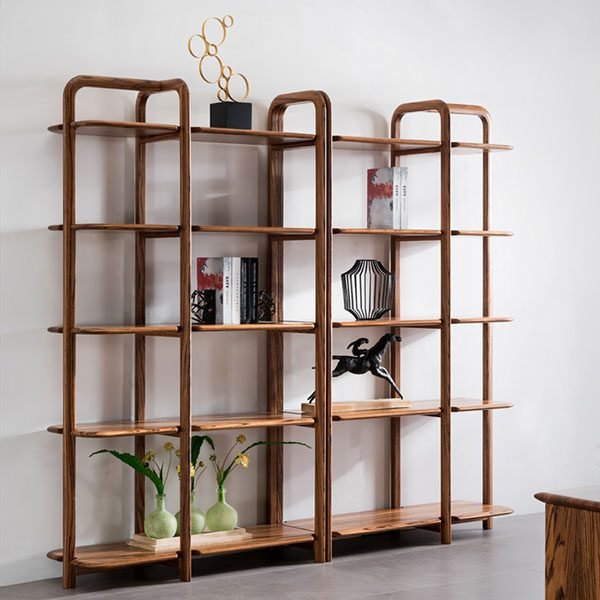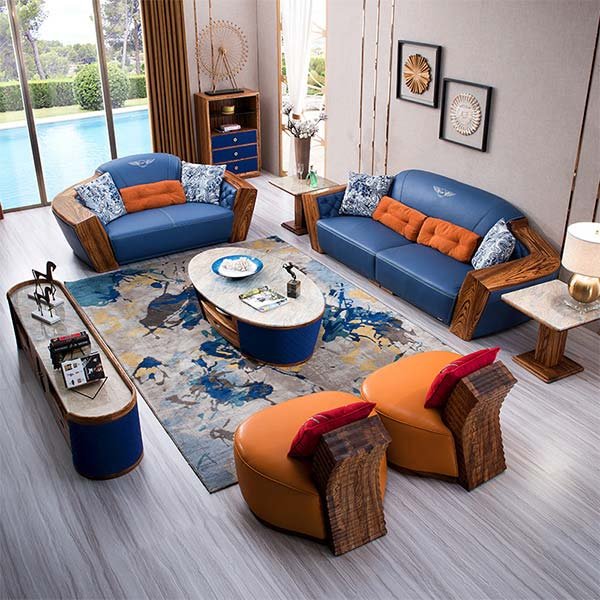“Maximize space, minimize clutter – the key to a stylish small living room!”
Utilize multi-functional furniture
When it comes to decorating a small living room, one of the biggest challenges is figuring out how to lay out the furniture in a way that maximizes space and functionality. One of the best ways to achieve this is by utilizing multi-functional furniture. Multi-functional furniture is a great way to make the most of a small space, as it can serve multiple purposes without taking up extra room.
One popular option for multi-functional furniture in a small living room is a sofa bed. A sofa bed can provide seating during the day and a comfortable place for guests to sleep at night. This can be especially useful if you frequently have visitors staying over, but don’t have a separate guest room. Another option is a storage ottoman, which can serve as a coffee table, extra seating, and a place to store blankets, pillows, or other items that tend to clutter up a small space.
In addition to multi-functional furniture, it’s important to consider the scale of the furniture you choose for a small living room. Opt for furniture that is proportionate to the size of the room, as oversized pieces can make the space feel cramped and cluttered. Look for furniture with clean lines and slim profiles, as these can help create the illusion of more space.
Another tip for laying out furniture in a small living room is to think vertically. Utilizing wall space for storage can help free up floor space and make the room feel more open and airy. Consider installing shelves or wall-mounted cabinets to store books, decorative items, or other belongings. You can also hang artwork or mirrors on the walls to draw the eye upward and create the illusion of higher ceilings.
When arranging furniture in a small living room, it’s important to leave enough space for traffic flow. Avoid placing furniture directly in front of doorways or blocking pathways, as this can make the room feel cramped and difficult to navigate. Instead, try to create clear pathways between furniture pieces to allow for easy movement throughout the space.
In conclusion, laying out furniture in a small living room can be a challenge, but with the right approach, it is possible to create a functional and stylish space. By utilizing multi-functional furniture, choosing appropriately scaled pieces, thinking vertically, and ensuring adequate space for traffic flow, you can make the most of your small living room and create a comfortable and inviting space for you and your guests to enjoy.
Use light colors to create the illusion of space
When it comes to furnishing a small living room, one of the key strategies is to use light colors to create the illusion of space. Light colors such as white, cream, and pastels can make a room feel larger and more open. By choosing light-colored furniture, walls, and accessories, you can visually expand the space and make it feel more airy and spacious.
Another way to use light colors to your advantage in a small living room is to paint the walls a light color. Light-colored walls can reflect more light, making the room feel brighter and more open. This can help to create a sense of depth and dimension in a small space, making it feel larger and more inviting.
In addition to using light colors on the walls and furniture, you can also use light-colored accessories to enhance the feeling of space in a small living room. Light-colored throw pillows, rugs, curtains, and artwork can all help to brighten up the room and create a sense of airiness. By incorporating light-colored accents throughout the space, you can create a cohesive and harmonious look that makes the room feel more spacious.
Overall, using light colors in a small living room is a simple yet effective way to create the illusion of space. By choosing light-colored furniture, walls, and accessories, you can make the room feel larger and more open, allowing you to maximize the space and create a comfortable and inviting living area.
Moving on to the next tip for laying out furniture in a small living room, consider the scale and proportion of the furniture. In a small space, it’s important to choose furniture that is appropriately sized for the room. Oversized furniture can overwhelm a small living room and make it feel cramped and cluttered. Instead, opt for furniture that is scaled to fit the space, such as a small sofa or armchair that won’t overpower the room.
When arranging furniture in a small living room, it’s also important to consider the flow of the space. Make sure there is enough room to move around the furniture comfortably, and avoid blocking pathways or doorways. By arranging the furniture in a way that allows for easy movement and traffic flow, you can create a more functional and inviting living area.
In addition to considering the scale and flow of the space, think about the layout of the furniture in relation to the focal point of the room. Whether it’s a fireplace, television, or window, the focal point should be the main focus of the room, with the furniture arranged to complement and enhance it. By positioning the furniture in a way that draws attention to the focal point, you can create a cohesive and visually appealing living room layout.
Overall, when laying out furniture in a small living room, it’s important to consider the use of light colors, scale and proportion, flow of the space, and focal point. By following these tips, you can create a well-designed and functional living area that maximizes the space and makes the room feel larger and more inviting.
Arrange furniture to create distinct zones
Arranging furniture in a small living room can be a challenging task, but with the right approach, you can create a space that is both functional and visually appealing. One effective way to maximize the use of space in a small living room is to create distinct zones for different activities.
Start by identifying the main activities that will take place in the living room, such as watching TV, reading, or entertaining guests. Once you have a clear idea of how you will be using the space, you can begin to arrange the furniture to create separate areas for each activity.
One common layout for a small living room is to place the sofa against one wall, with a pair of armchairs or a small loveseat opposite it. This arrangement creates a cozy seating area that is perfect for conversation or watching TV. To define this zone further, you can add a coffee table or area rug to anchor the furniture and create a sense of unity.
Another important consideration when arranging furniture in a small living room is to make sure there is enough space for traffic flow. Avoid placing furniture in such a way that it obstructs the natural path through the room. Instead, leave enough space between pieces of furniture to allow for easy movement around the room.
If your living room is small, you may need to get creative with your furniture placement. Consider using multifunctional pieces, such as a coffee table with storage or a sofa bed, to maximize the use of space. You can also use furniture that is visually lightweight, such as glass or acrylic pieces, to create the illusion of more space.
In addition to creating distinct zones for different activities, you can also use furniture to define the layout of the room. For example, placing a console table behind the sofa can help to separate the living area from the dining area in an open-concept space. Similarly, using a bookshelf or room divider can create a sense of separation between different areas of the room.
When arranging furniture in a small living room, it is important to consider the scale of the pieces you are using. Avoid using oversized furniture that will overwhelm the space, and instead opt for smaller pieces that are more proportionate to the room. You can also use furniture with legs to create a sense of openness and airiness in the room.
In conclusion, arranging furniture in a small living room requires careful planning and consideration of how the space will be used. By creating distinct zones for different activities, using multifunctional pieces, and paying attention to scale and traffic flow, you can create a functional and stylish living room that makes the most of your limited space.
Заключение
Arrange furniture in a small living room by creating a focal point, using multipurpose furniture, maximizing vertical space, and keeping pathways clear for easy movement.



